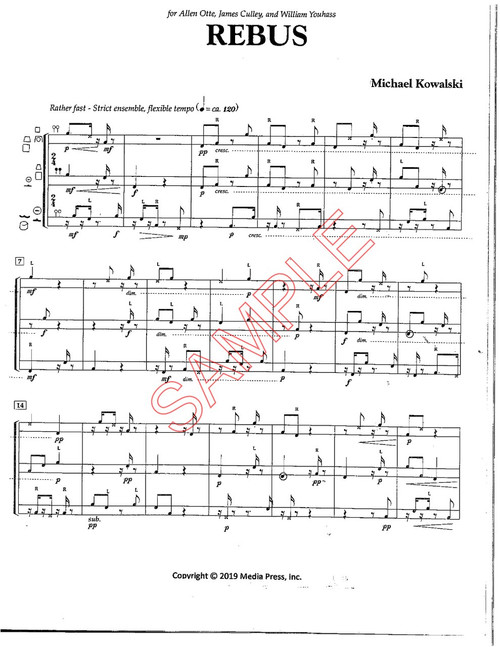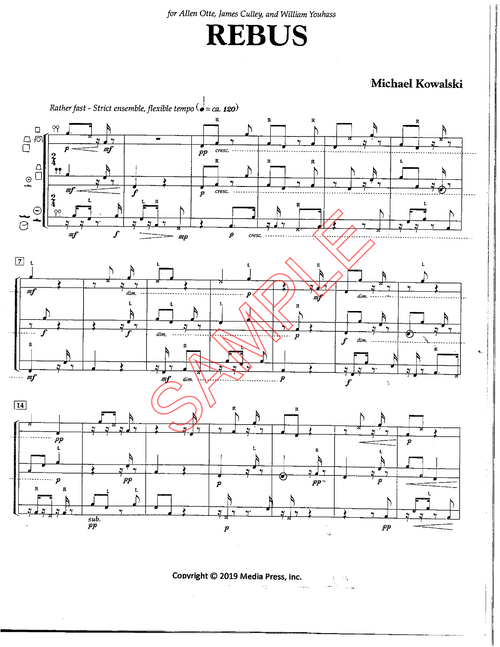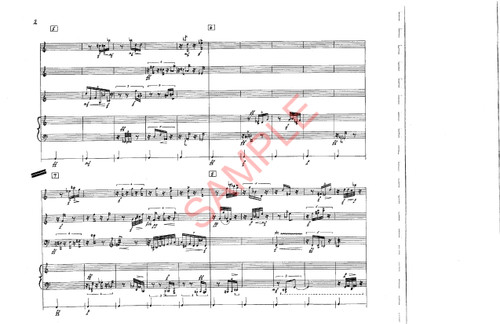Includes score and parts.
3 movements. Approximately 15 minutes.
Rebus is a semaphoric ballet for three percussionists. The music of Rebus is derived from the choreographic patterns that form the motivic basis for each of its three movements. The arrangement and spacing of the instruments in a grid across the apron of the stage creates a space within which the three players move. Simply playing the score and observing indicated crossover sticking produces the intended choreography. To create the piece's choreography, in other words, the musicians need only do what they do best: play their instruments beautifully. Since the audience needs a full-body view of the three players, they should either be off-score or, if absolutely necessary, be reading from scores mounted unobtrusively on the floor.
Although the music of Rebus is derived from its choreography, in no sense does the visual dimension dominate the musical. As in any good film score, the power of the music to color, shape, and pace the perception of visuals is overwhelming. The two dimensions remain poised in a delicate balance.
Rebus was commissioned by The Percussion Group/Cincinnati in 1980 and has been performed extensively by them, both on tour and in school programs.
Want it now? Click here to purchase a digital copy of this product.
Review from Percussive Notes (2022):
“Rebus” is a composition for percussion trio with a strong visual effect attached. Composer Michael Kowalski makes specific recommendations about stage setup, lighting, the performers’ choice of clothing, and stage presence. As Kowalski writes, “The visual aspect of ‘Rebus’ is as important as the musical aspect.” For each of the three movements, a visual pattern was created first and then translated into the musical content.
The composer includes a very detailed set- up diagram and notation legend. The composite rhythm throughout the piece is particularly groove-based and “catchy” (Kowalski’s term). This was a bit surprising to me, as many pieces with a strong emphasis on the visual presentation present a more esoteric musical affect. Performers would feel very comfortable playing this piece based on its combination of unisons and hocketed rhythms. A potential pitfall, if the performer is not used to it, is having the left hand and right hand on separate lines in the notation.
I recommend this for a university or professional percussion ensemble looking for a piece to engage the audience and performers in a multi- media experience. Though not incredibly technically difficult, the focus on the aesthetic presents a challenge to the performers and a visual treat for the audience.
—Justin Bunting
Demo:







